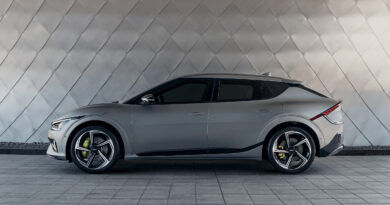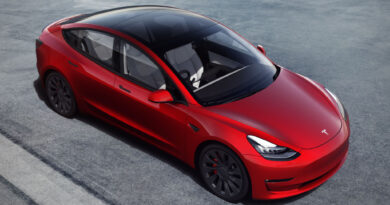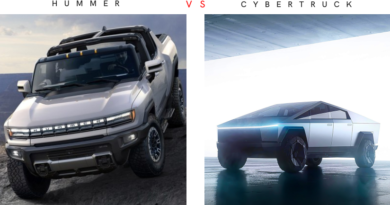Driven: Alfa Romeo Tonale hybrid
Alfa Romeo’s ambitious electrification program begins here, with the new Tonale. Hybrid variants of the small SUV will be the brand’s first-ever products with petrol-electric power. They will be joined later this year by a range-topping PHEV.
It may be a latecomer to the plug-in party, but Alfa Romeo will electrify with alacrity. The aim is for the Italian company to be the first of the 14 car makers owned by global giant Stellantis to switch to a 100 percent EV line-up.
READ MORE: Alfa Romeo looking to electric motors for Tonale Quadrifoglio
READ MORE: Alfa Romeo Tonale (finally) brings Italian brand into electrified world
READ MORE: Alfa Romeo confirms all-electric plans for 2027
The five-year plan is “validated and locked”, according to Alfa Romeo’s boss, Jean-Philippe Imparato. Every year from now until 2030 the brand will deliver an all-new model or major update, the energetic Frenchman promises. From 2025 every new Alfa Romeo launched will be an EV and in 2027 the last model with an ICE will be retired.
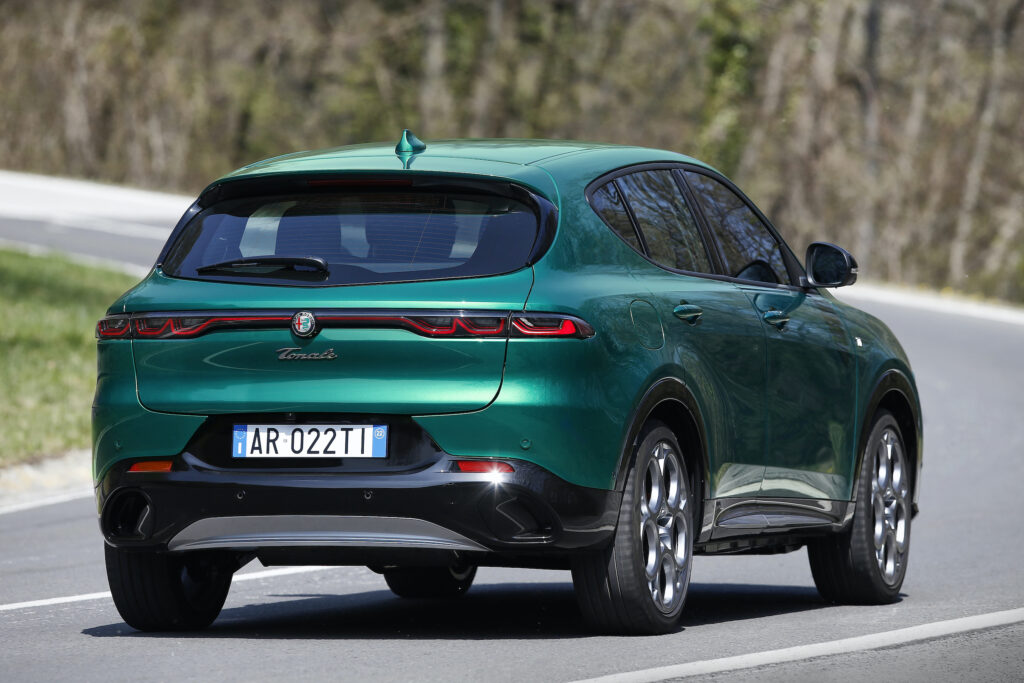
Not-so-mild 48-volt hybrid
Tonale’s hybrid tech is interesting. It’s a low-voltage system, but the powertrain is no mere mild hybrid. The Alfa is much more like a so-called full hybrid.
The main similarity is that it can drive purely electrically, briefly and slowly, just like a high-voltage Toyota hybrid. But the way the Tonale does it is quite different.
Alfa Romeo isn’t, in fact, the first Stellantis brand to use this tech. In Europe early this year Jeep introduced e-Hybrid versions of the Renegade and Compass. These have same new seven-speed double-clutch automatic as the Tonale.
Developed and manufactured by global component giant Magna, this transmission is unusual in incorporating a 15kW/55Nm electric motor. In other 48-volt hybrids the e-motor is instead attached to the engine, in the form of a belt-drive or crankshaft-mounted starter-generator.
Two of the four Tonale models just starting to roll off Alfa’s assembly line outside Naples, the Super and Sprint, also use exactly the same 96kW/240Nm turbo 1.5-litre four as the Jeeps. The 118kW/240Nm engine in the more upmarket Ti and Veloce versions is the same, except for a power-boosting variable-geometry turbo.
As in the Renegade and Compass, the Tonale’s 0.8kWh lithium-ion battery pack is installed in the centre tunnel running between the front seats. This blocks the path for a driveshaft to the rear axle, so the Jeeps and the Alfa are front-drive only.
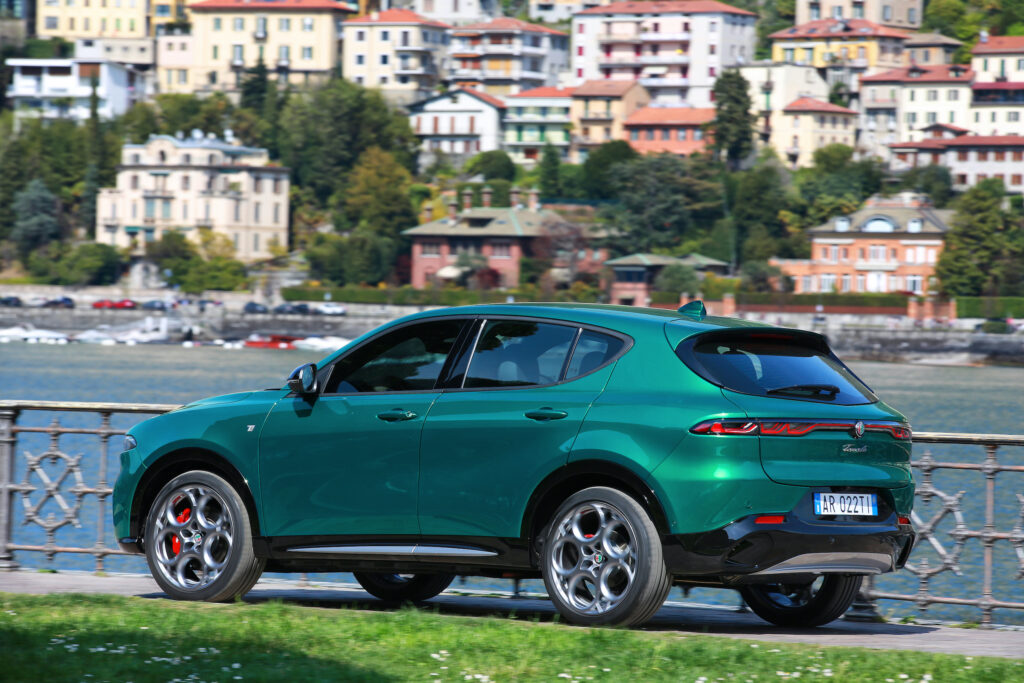
Faster PHEV coming later
But an all-wheel-drive Tonale is on the way. Production will begin late this year. This top Tonale is a PHEV, combining a turbo 1.3-litre four, driving the front wheels, and an electric motor in the rear axle powered by a high-voltage battery pack.
This axle-split PHEV powertrain is basically the same as in the 4xe versions of the Jeep Renegade and Compass, launched in Europe two years ago but not sold in Australia. For Tonale the system’s power, performance and electric-only driving range will all increase.
Alfa Romeo promises the Tonale PHEV will have a 60km range on battery power, according to the WLTP combined test standard. Around town it’ll be able to cover 80km, the company says. The PHEV system’s maximum combined output will be 202kW and its 0-100km/h acceleration time will be 6.2 seconds, way faster than the plain hybrids.
The Tonale PHEV should also handle better. Alfa Romeo engineering chief Domenico Bagnasco says the aim is to give the SUV close-to-perfect 50:50 weight distribution. This is always a good start when aiming for dynamic prowess, so the Tonale PHEV should be a more fun drive than the nose-heavy hybrid variants.
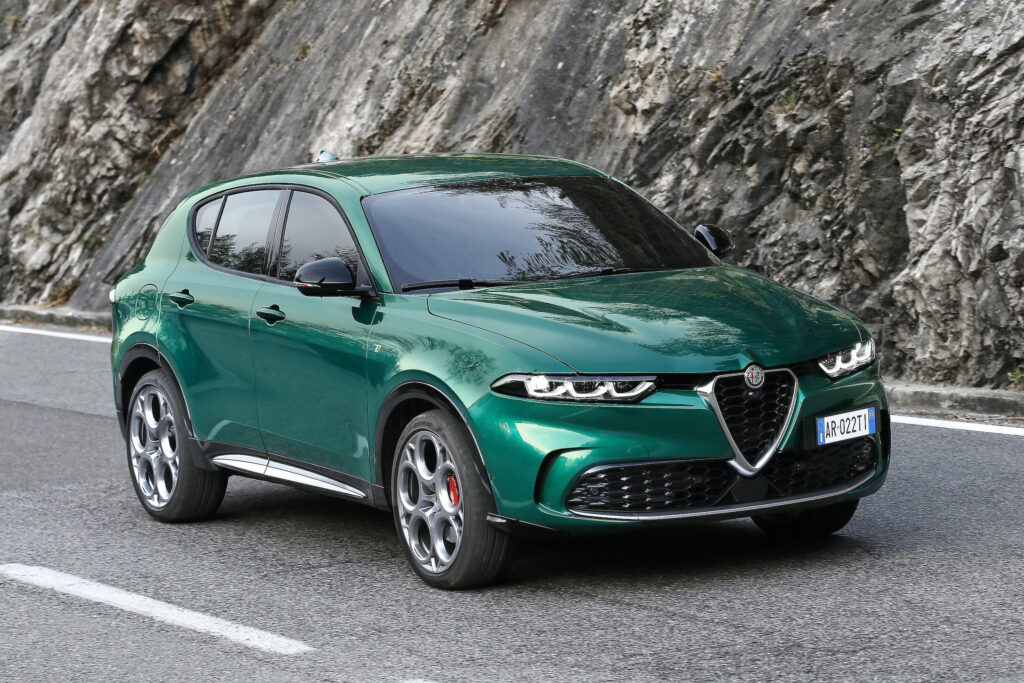
On the road
Alfa Romeo brought Ti and Veloce versions of the Tonale hybrid to its recent international launch in the north of Italy. Test driving on roads in and around Lake Como it was soon apparent that the small SUV falls well short of delivering the brand’s fabled fun-to-drive factor.
The Tonale is built on a modified version of the platform used by the Jeep Renegade and Compass, among others. Starting to see a theme here?
According to engineer Bagnasco the changes are extensive. The Tonale’s floorpan is stiffened, its front and rear suspensions have different parts to increase the distance between each pair of wheels, and its steering is much more direct.
These alterations fail to make the Tonale a driver’s delight. The steering is very light, which isn’t a problem, and totally feel-free, which is. It’s also prone to torque steer when accelerating hard.
The Alfa’s brake-by-wire system, which blends normal friction and electrical regenerative braking, is powerful. But the pedal feels wooden and it’s not easy to get exactly the amount of braking you want, especially at lower speeds.
While the Tonale’s chassis corners capably, its firm springs and dampers make the ride uncomfortable on rough surfaces. The more basic Ti has passive shock absorbers, and its suspension is noticeably less absorbent than the upmarket and adaptive-damper-equipped Veloce.

Another Veloce upgrade is a pair of rather beautiful column-mounted cast aluminium paddle shifters, but these aren’t a guarantee of sporty performance. The engine – the same in both Ti and Veloce, remember – isn’t especially powerful. Acceleration is adequate, not exciting, despite the extra boost from the e-motor in the transmission.
The engine could be more refined, too. It’s busily buzzy in the zone between 3000 and 4000rpm, sending tingly vibes through the Tonale’s floor.
Alfa Romeo’s hybrid tech is most convincing in stop-start city traffic or when driving slowly through Italian villages. Here, the Tonale frequently runs electrically. Restarts of the engine, when they happen, are swift and smooth.
The same can’t be said for the seven-speed’s shifting. Downshifts at low speed are occasionaly jerky and the transmission often dithers over which ratio to pick next. On the other hand, driving quickly on a winding road in Dynamic mode, the shifts are better timed and almost always smooth.
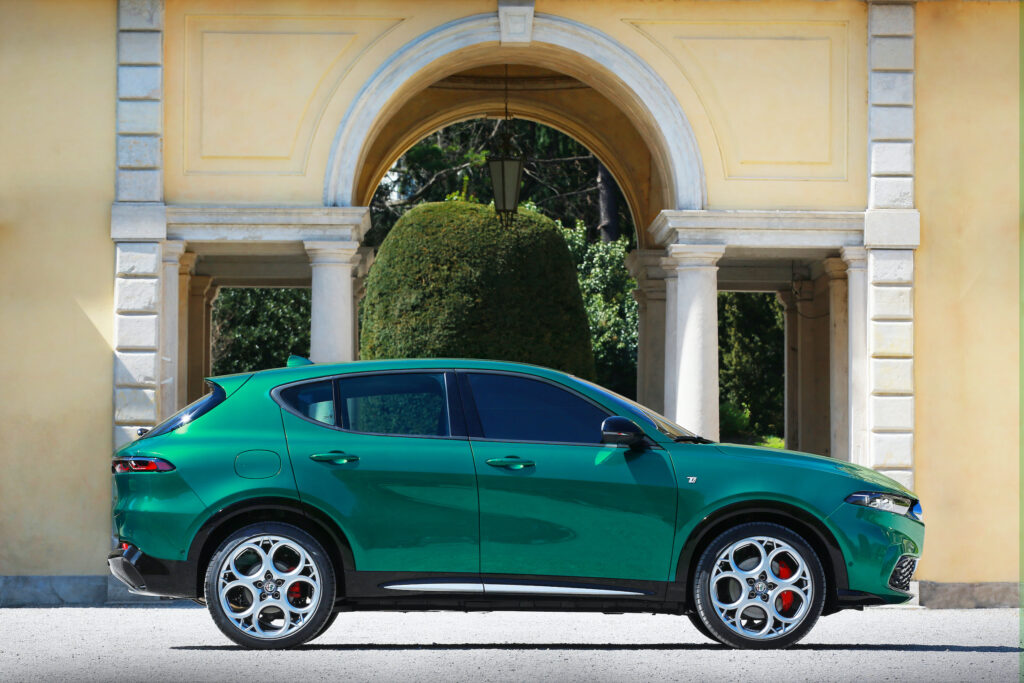
Style, space and tech
Tonale’s exterior design is masterful. Its proportions, form and details work together to create a look that’s more attractive than obvious competitors from Audi, BMW and Volvo. The Q3, X1 and XC40 aren’t going to win any beauty contest the Tonale enters.
The Alfa Romeo is spacious inside, too. The three-place rear seat is easy to access and offers good knee and head room even for tall adults. Behind is a usefully large 500-litre cargo compartment.
Those in the deeply bolstered seats up front are presented with an instrument panel that is good to look at, seems well made, and, even more important in this digital age, is technically up to date.
Crisp TFT displays occupy the instrument binnacle and the centre touchscreen. Both are user-configurable. The Android-powered infotainment system can be updated over the air and provides an interface that’ll feel familiar to anyone who has a smartphone. The system is responsive, too.
There are plenty of options for device charging; an angled inductive pad beneath the centre display, plus four USB ports, two front, two rear. Each pair provides a normal old-fashioned USB plus an adjacent USB-C.

NFT world first
Each Tonale produced will be linked with an NFT (non-fungible token) from birth, in what Alfa Romeo claims is an automotive industry first. This tech stores an incorruptible digital record of the vehicle’s life.
With the owner’s consent, the NFT can be used to generate a certificate that includes information like mileage, service history, and any repairs that have been done.
Alfa Romeo boss Imparato says the tech will support strong resale values for the Tonale. And it can use all the help it can get…
The wrap…
Tonale may be a technically interesting hybrid, but it’s a dull Alfa Romeo. Though lovely to look at and, digitally speaking, something of an innovator, this petrol-electric SUV is a disappointingly flawed drive.
Stellantis in Australia isn’t yet saying when exactly which versions of the Tonale it plans to launch in the first quarter of 2023, or what they are likely to cost.
Our uneducated guess is that the more powerful Ti and Veloce are certainties, the Super and Sprint only maybes. To take on established rivals, Tonale prices will need to open at around $50,000 or a little less.
While it’s certain to cost much more than this, the PHEV should be able to deliver the energy, agility and driving character that the Alfa Romeo badge deserves. Hopefully…

2023 Alfa Romeo Tonale Ti specifications
Price: $50,000 (est)
Basics: Hybrid, 5 seats, 5 doors, small SUV, FWD
Battery capacity: 0.8kWh
Fuel consumption: 5.7 to 6.3L/100km (WLTP Europe)
Engine: 1.5-litre turbo in-line 4, 118kW/240Nm
Electric motor: 1 front, 15kW/55Nm
0-100km/h: 8.8 seconds (claimed)

